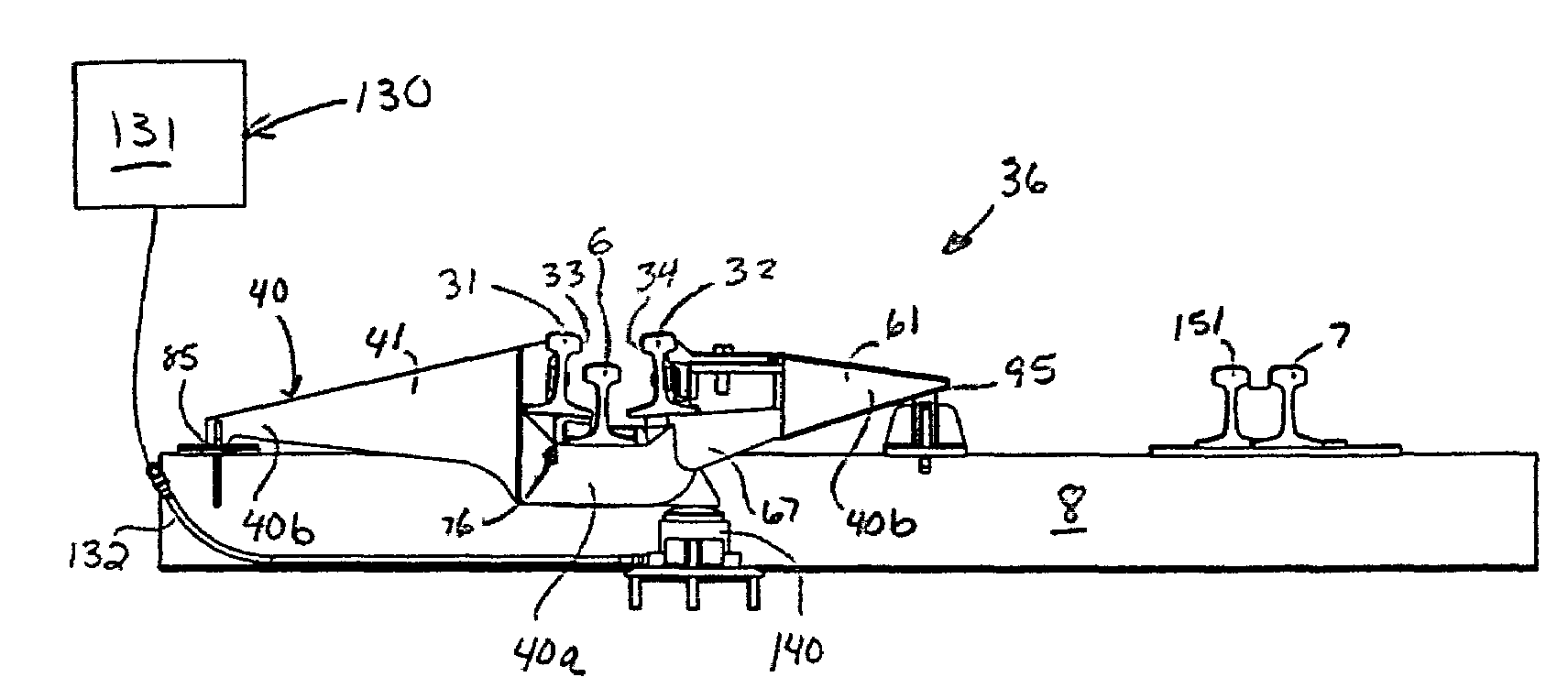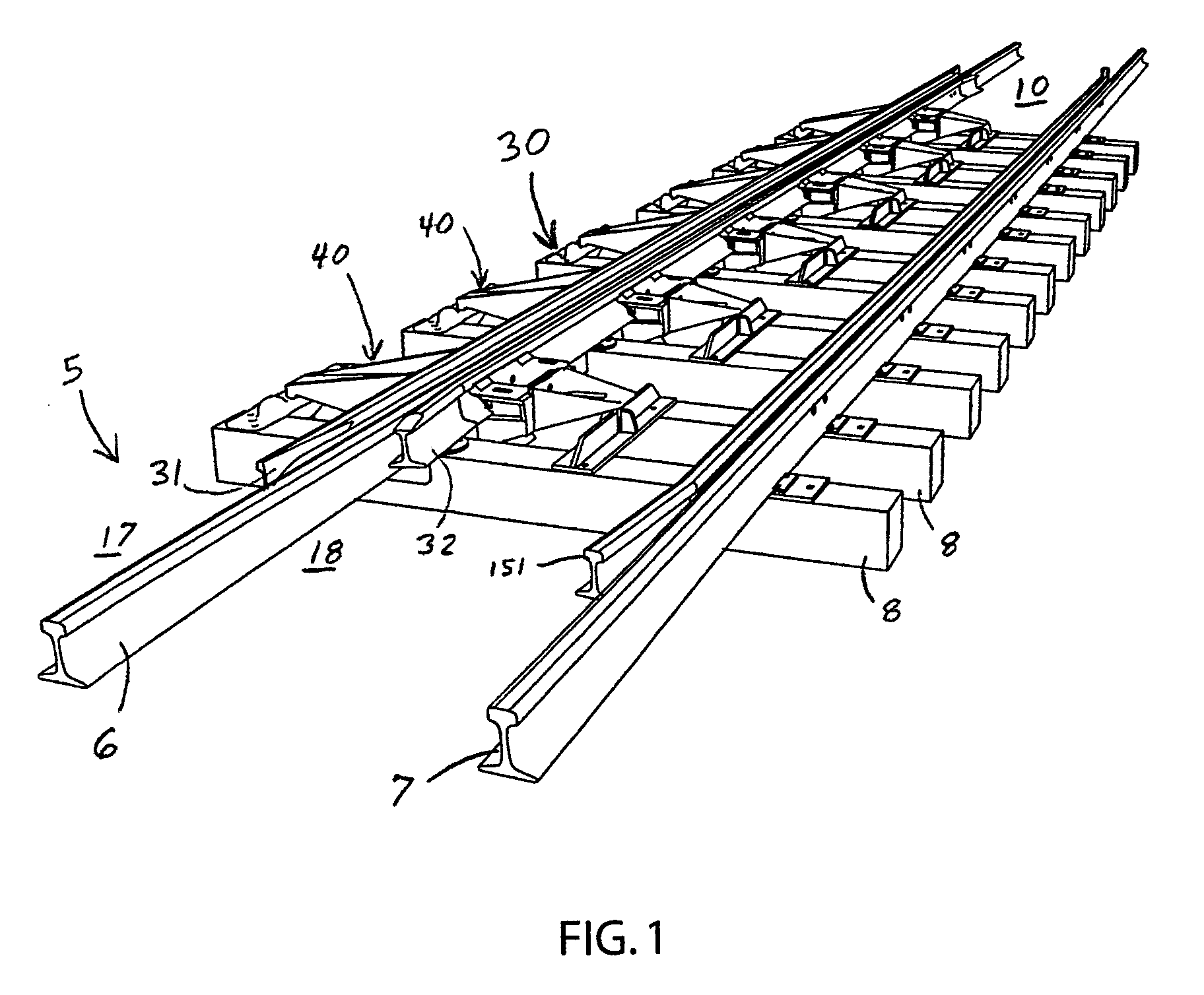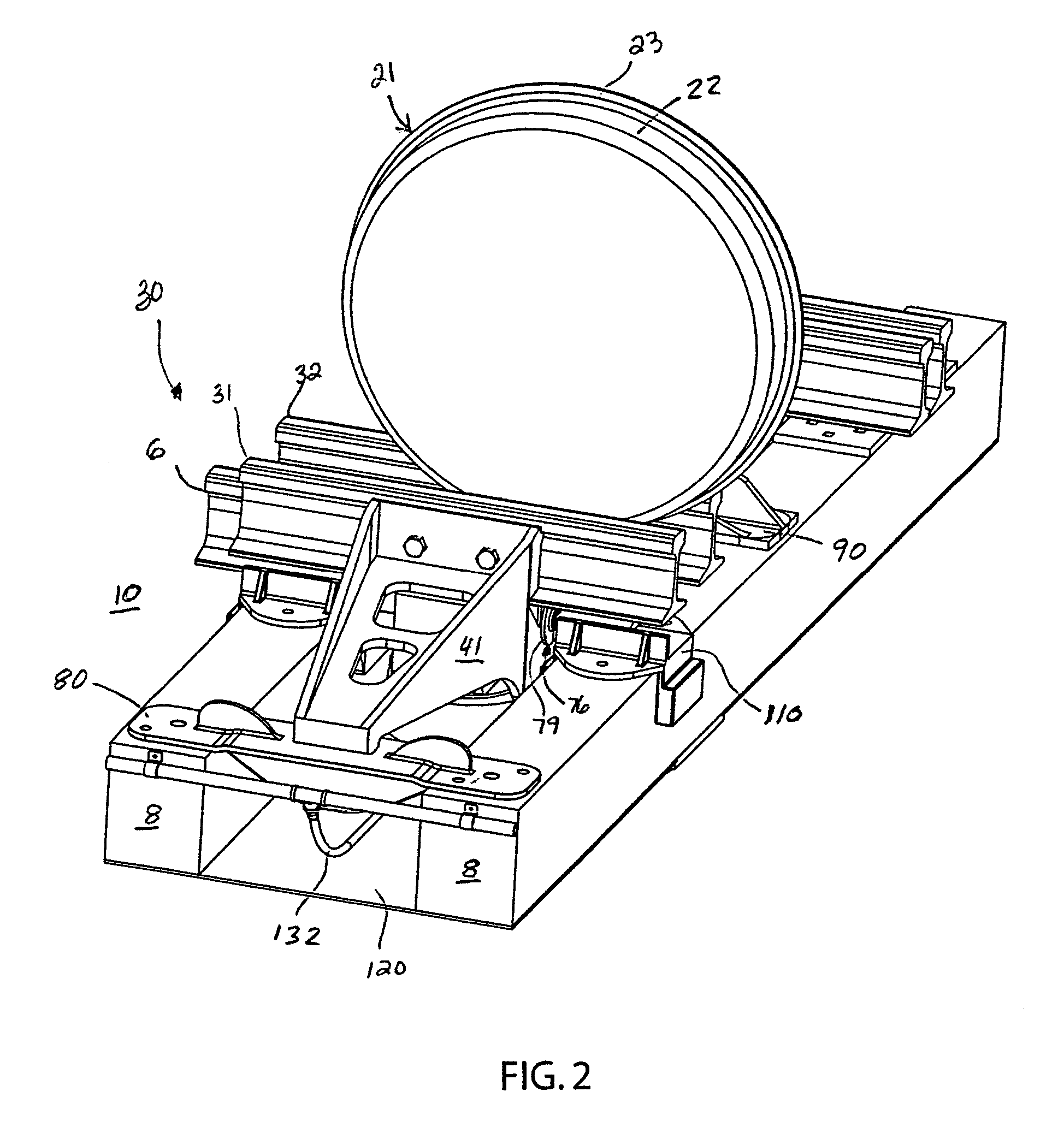Fail-safe, weight-responsive skate retarder
a technology of weight-responsive and skates, applied in the direction of track brakes, railway components, transportation and packaging, etc., can solve the problems of increased speed, increased cost and danger of derailment, and increased weight of cars
- Summary
- Abstract
- Description
- Claims
- Application Information
AI Technical Summary
Benefits of technology
Problems solved by technology
Method used
Image
Examples
Embodiment Construction
[0039]While this invention is susceptible of embodiment in many different forms, the drawings show and the specification describes in detail a preferred embodiment of the invention. It should be understood that the drawings and specification are to be considered an exemplification of the principles of the invention. They are not intended to limit the broad aspects of the invention to the embodiment illustrated.
[0040]Conventional railroad tracks 5 are formed by two uniformly spaced, generally parallel steel running rails 6 and 7 mounted atop a series of wooden railroad ties 8 supported by a bed of gravel ballast. Each rail 6 and 7 has a thicker upper head 12, a thinner middle web 13, and a thicker base 14 with a flat bottom surface. The flat base 14 typically rests on the flat upper surface of the ties 8 or a flat mounting plate on the upper surface of the tie. The rails 6 and 7 are held firmly in place at their base 14 by fasteners such as spikes driven into the ties. In switching o...
PUM
 Login to View More
Login to View More Abstract
Description
Claims
Application Information
 Login to View More
Login to View More - R&D
- Intellectual Property
- Life Sciences
- Materials
- Tech Scout
- Unparalleled Data Quality
- Higher Quality Content
- 60% Fewer Hallucinations
Browse by: Latest US Patents, China's latest patents, Technical Efficacy Thesaurus, Application Domain, Technology Topic, Popular Technical Reports.
© 2025 PatSnap. All rights reserved.Legal|Privacy policy|Modern Slavery Act Transparency Statement|Sitemap|About US| Contact US: help@patsnap.com



